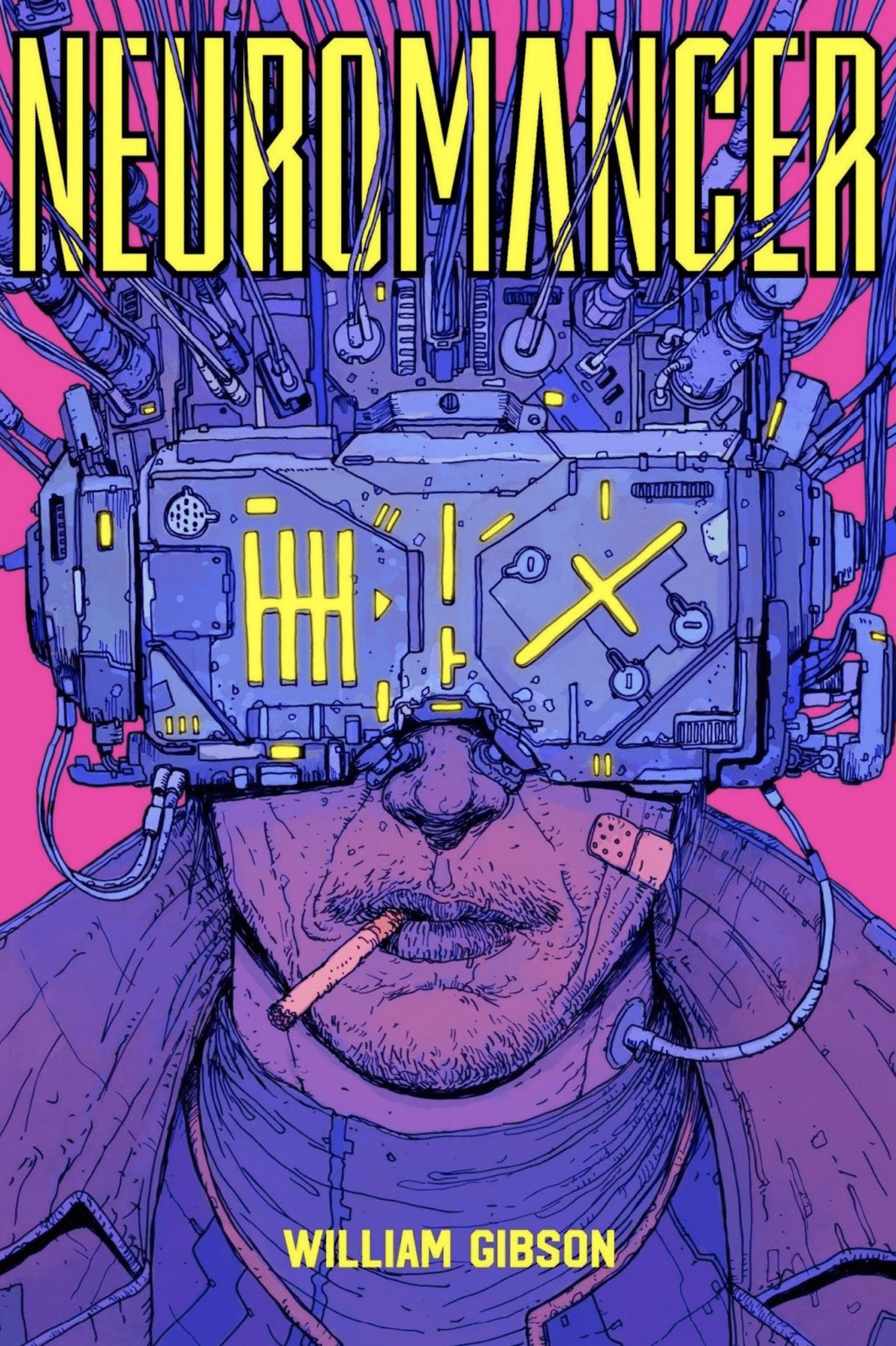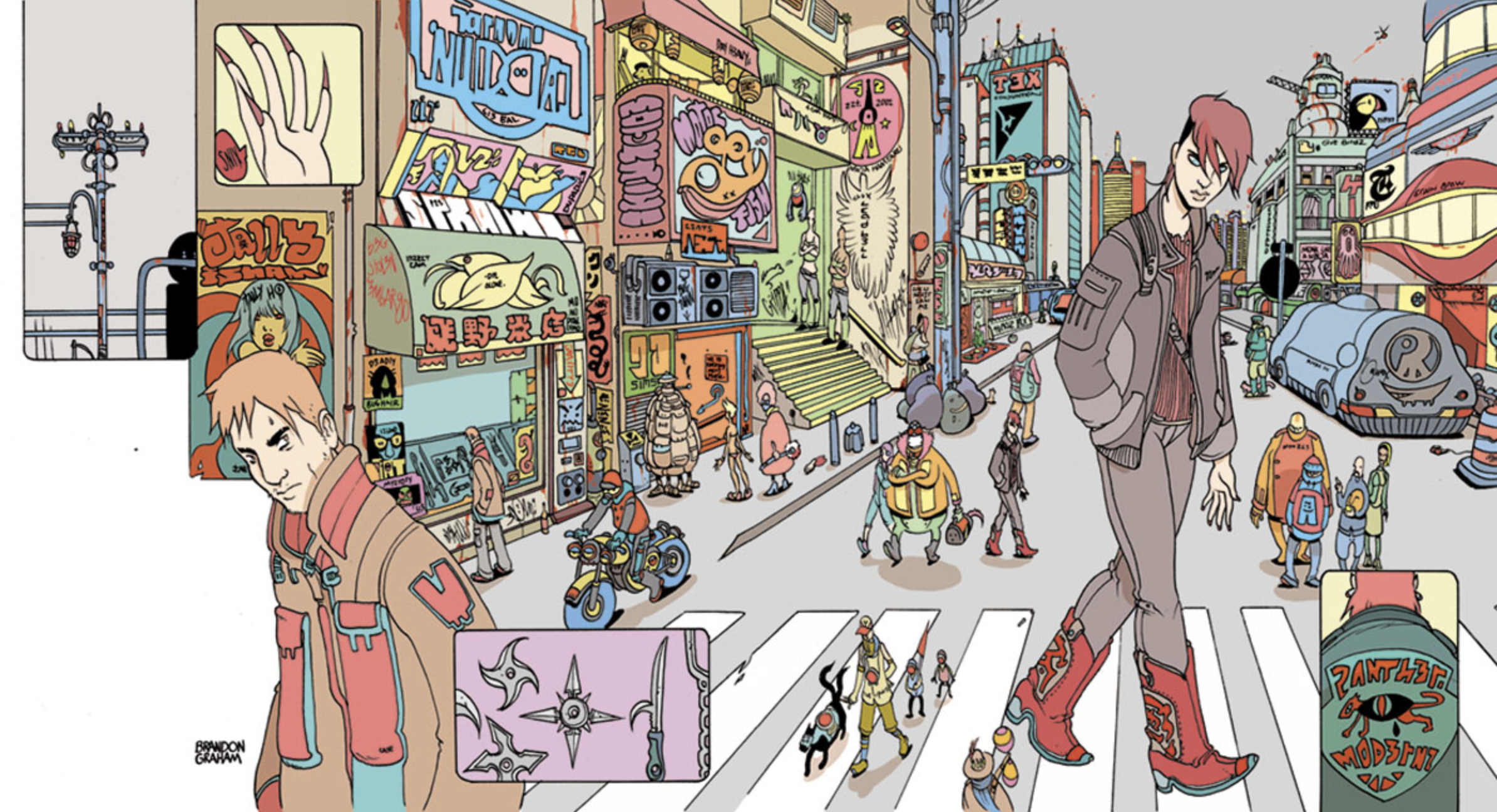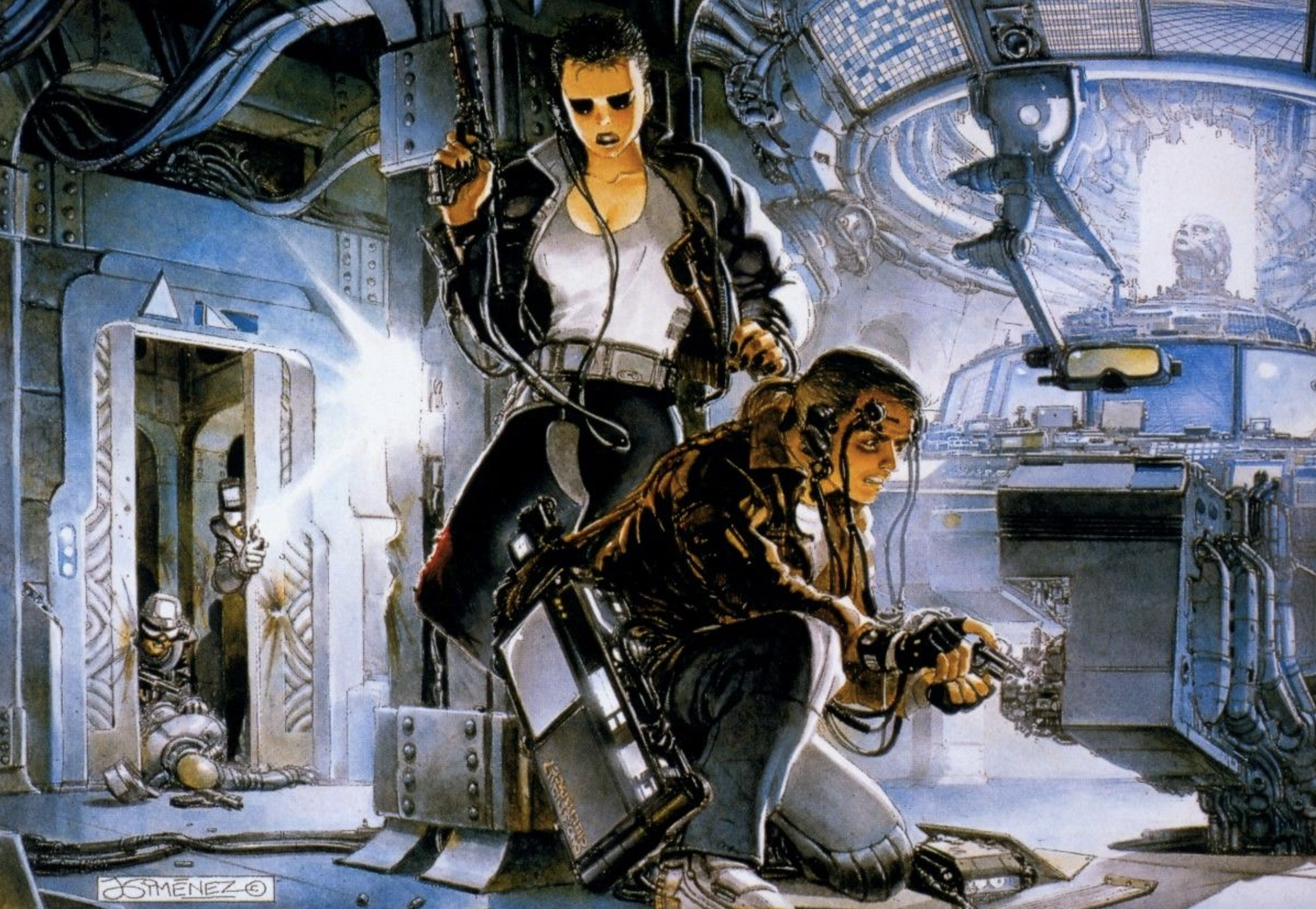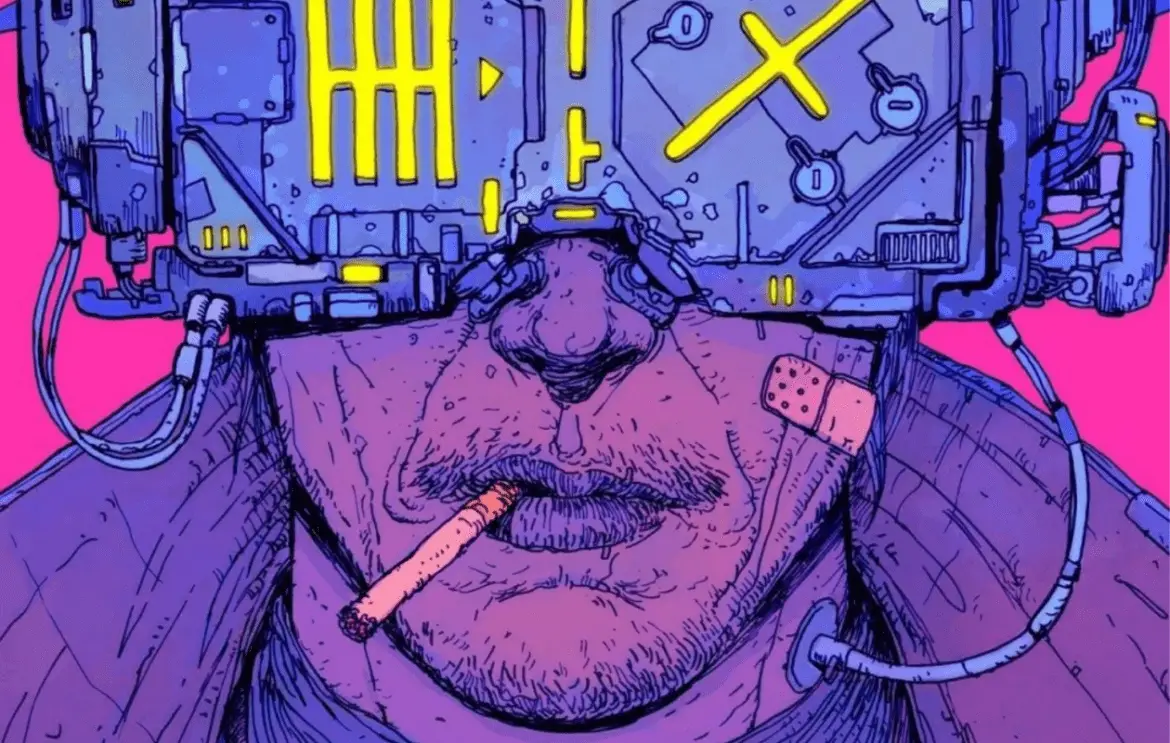Neuromancer’s opening line sets the tone for the cyberpunk genre:
The sky above the port was the color of television, tuned to a dead channel.
The sky above the port was the color of television, tuned to a dead channel.
The opening line to Neuromancer (1984) by William Gibson sets the tone for a dark and gritty cyberpunk world that’s progressively looking more like the world of today. An uninformed reader would be hard-pressed to imagine the book being written during the 1980s, seeing as much of the once-speculative technology has been realized.
Aside from the creation of “cyberspace” in the form of the world wide web, technologies like artificial intelligence, virtual reality and cybernetic enhancements all have taken the leap from the page into our lives. William Gibson even coined the word “Cyberspace” as a term for the digital reality which he envisioned. This fundamental cyberpunk novel was prophetic in its handling of technology.
Neuromancer was released two years after the seminal cyberpunk movie, Blade Runner came to the big screen . . . and flopped. Gibson was so worried about the similarities between Neuromancer and the film that he rewrote the first two-thirds of the book twelve times.
The furious editing eventually produced his debut novel, which went on to win an array of awards. The novel was the first ever to win the “Triple Crown” (the Hugo award, the Nebula, and the Philip K. Dick Award). This was an impressive feat for a debut novel, and more importantly, a landmark moment for the fledgling cyberpunk genre.
Although they aren’t necessary to enjoy the novel, the world of Neuromancer is supplemented by two sequels, Count Zero and Mona Lisa Overdrive. Together, they make up The Sprawl Trilogy, named after the megacity the characters inhabit. In addition to these novels, there are connections to Gibson’s short stories Burning Chrome and Johnny Mnemonic, both of which are great reads.

We join Case at the Chatsubo . . .
The novel begins in Chiba City, Japan. Our main character is a washed-up hacker named Henry Dorsett Case. He’s an extremely talented hacker with a vital flaw; he can’t access cyberspace anymore.
After double crossing his last employers, Case’s nervous system has been poisoned in such a way that he’s unable to “jack in” to cyberspace again. With his connection cut, Case is a miserable figure that’s left to run odd jobs for the criminal underbelly of Chiba City.
When he’s approached by a mysterious woman with a job offer that seems too good to be true (a way to get him back into cyberspace), Case can’t turn her down. This tech-noir setup helps to galvanize the setup and pulls the reader into the thrilling situation that Case has been placed.
Thus begins a globetrotting (and space-travelling) mix of mystery, science, action and adventure — all mixed together to form the recipe for cyberpunk edge.
It’s this mixture that lets Gibson place his characters into the middle of a harsh environment that’s not afraid to get dirty, all the while threading a paranoid web that keeps both characters and readers on edge as the novel twists its way toward conclusion.
William Gibson Created The Language of Cyberspace
It’s through Gibson’s vivid language and visualization that the abstract realm of Cyberspace is created. Unlike the World Wide Web we use today, the realm of Cyberspace requires equipment like a cyberdeck (seen here! And on our site, too!) which allows a hacker to plug their consciousness into the network directly. Webpages are replaced with visual representations of data, towers and spires that are hallucinogenic avatars for large corporations and their infrastructure within the matrix.
The matrix has its roots in primitive arcade games. … Cyberspace. A consensual hallucination experienced daily by billions of legitimate operators, in every nation, by children being taught mathematical concepts. … A graphic representation of data abstracted from banks of every computer in the human system. Unthinkable complexity. Lines of light ranged in the nonspace of the mind, clusters and constellations of data. Like city lights, receding.
It is these representations (see quote above) that the hackers of Gibson’s work aim to break into with the ever present threat of “Flatlining” as in this world the antivirus fights back. Cybersecurity measures known as ICE send a shock straight to the brain of the hacker, leaving them dead. In the world of Neuromancer, tech savvy rebellion against the all powerful and oppressive mega-corporations means death is always a real threat. The reader should not assume that anyone is safe.

Neuromancer Talks Tech That Keeps on Giving
Obviously, technology plays an integral part within Neuromancer, as the novel explores cutting-edge and revolutionary concepts that were barely blips on the radar at the time of the novel’s release. One of the main technologies presented is Artificial Intelligence and the extent of its unchecked reach. In the novel, AI are powerful beings which hold national citizenships, yet despite their power, there are laws and legislature keeping them shackled to their physical mainframes.
One of the most interesting (and terrifying) pieces of technology Gibson brings to bear is the use of Read-Only Memories: a technology that involves the individual’s brain being scanned and a snapshot of the brain in that moment being saved. All of this is demonstrated through the character “Dixie Flatline,” an old mentor of Case’s who has since died but lives on in ROM format. Due to the snapshot nature of his being, Dixie can never develop beyond his own moment, and there are implications of dementia caused by keeping this once-human life frozen in a static existence. It’s fascinating how the author uses technology to show just how little life is valued in this new world and how far technology has progressed. This example is cyberpunk writ large.
Some of the language used in Neuromancer may confuse or throw the reader, as William Gibson enriches the culture of the Sprawl by imbuing it with a new lexicon of slang.
Terms that fit the world yet may not make sense to the reader in the moment (i.e. the re-introduction of accepted vocabulary like “ICE” as Intrusion Countermeasures Electronic) prompt the reader to seek context in effort to understand its application. As the book progresses, meanings become clearer, and the jarring “jacking-in” smoothes out as the world of William Gibson’s Sprawl Trilogy . . . sprawls.

Personally, I feel that it’s this use of language that makes Neuromancer such a unique read, as it makes the world feel like it’s in its own time and developed due to its own technological advances and world events. The vernacular Gibson adopted was more-or-less unknown at the time, exhibited by the genre-defining coining of new phrases, many of which would go on to become commonplace in Cyberpunk and Science Fiction after the book’s publication.
So if you’re still wondering why Neuromancer is named as the definitive core of cyberpunk media, then you probably haven’t read it. This is the fundamental cyberpunk novel, and it set the baseline that all future cyberpunks would compare their work against. It’s easy to antiquate the book, seeing as we have overcome the emergent mystique of cyberculture (and partially because of great audiobook rendition, one featuring William Gibson himself, not to mention the BBC radio play). However, Neuromancer’s importance as the seminal cyberpunk book should not be forgotten, but nor should it serve as the only reference given to fledgling cyberpunks. There’s a reason it sits atop the list of cyberpunk books you’ve gotta read, but true console cowboys will view it as the original point-of-entry, rather than the endgame.


2 comments
Online media that don’t put publication dates on their article are completely bullshit. Are you reading an article from yesterday? A month ago? Last year? 2004? WTF knows.
Thanks, Keith. Things are working as intended. We like your website also.